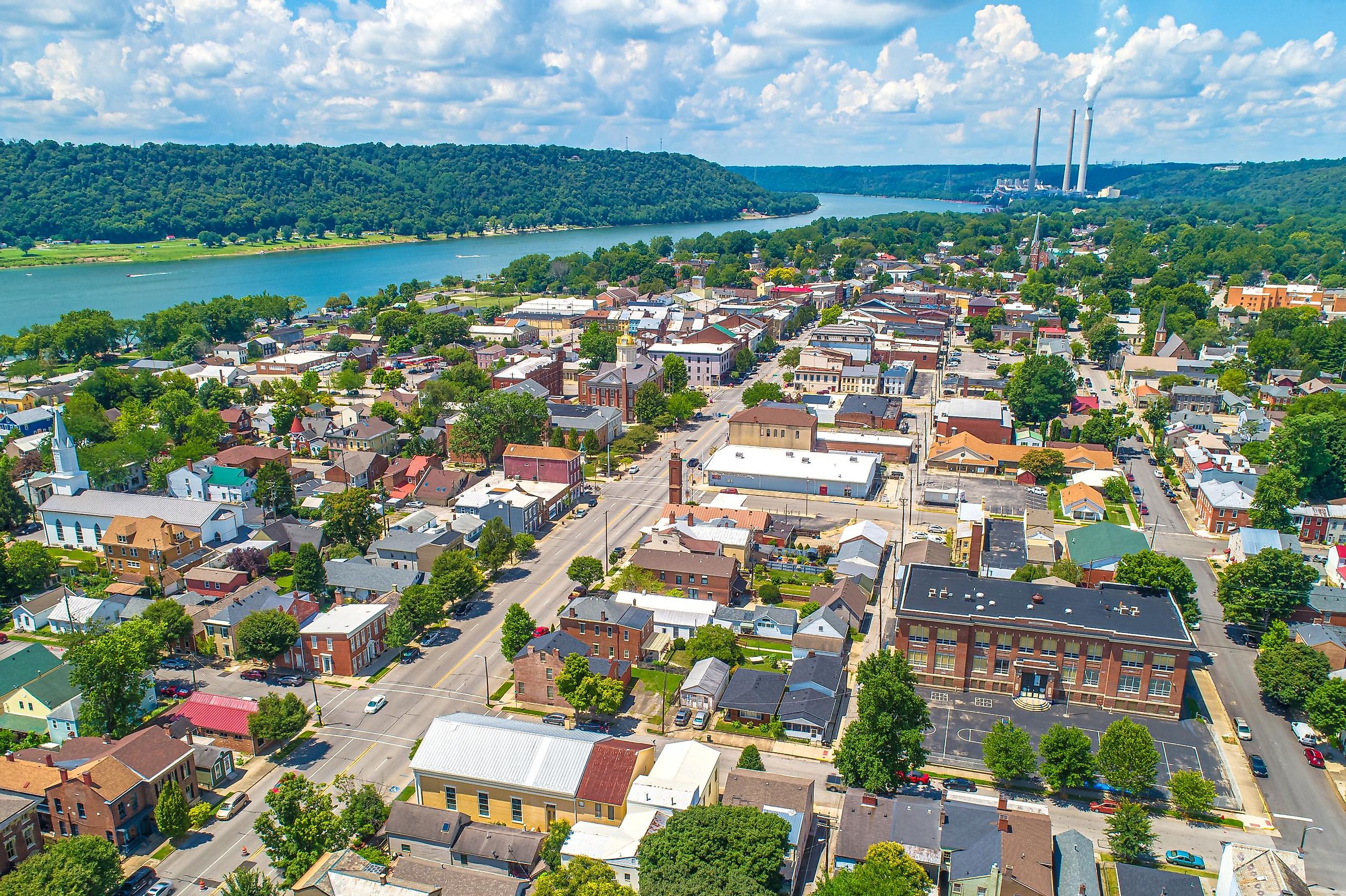
7 Top-Rated Small Towns In Indiana
The attractions of Indiana are many — but it helps to know where to look. Outside urban centers like Fort Wayne and the capital, Indianapolis, Indiana's small towns offer quaint destinations for the curious traveler. The state brings together the history and do-it-yourself spirit of the old American frontier with pristine natural beauty. Known as the "Hoosier State," which may have come from the old homesteader greeting, "Who's yere?" Indiana has a culture all its own, rooted in history and kept alive by proud Indianans today. Hoosier culture is on vivid display in small towns like these.
New Harmony
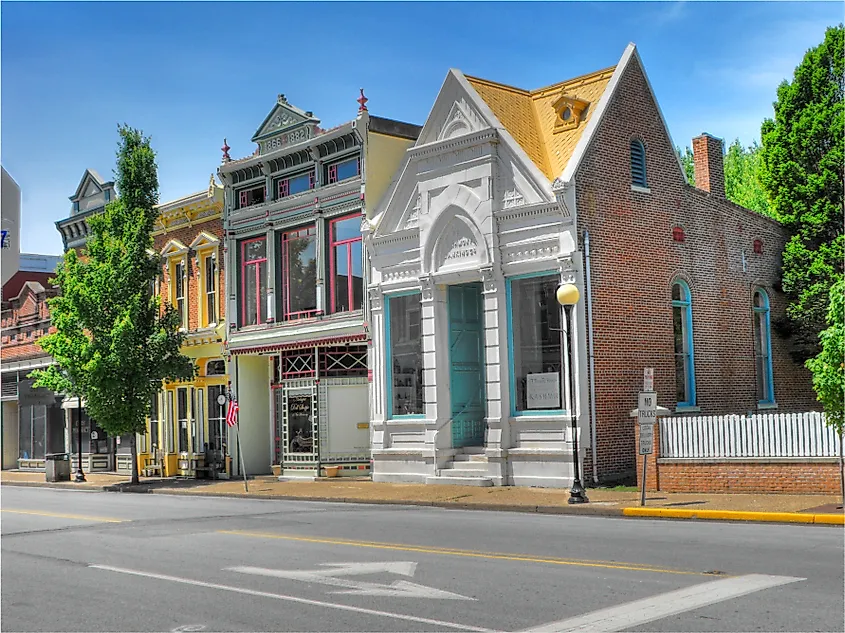
New Harmony, with just 700 inhabitants in southwest Indiana, offers a pleasant, quiet getaway and is the smallest town on this list. The place takes its name from a group of religious separatists known as the Harmonists, who, in 1814, arrived from Pennsylvania to start a new utopian life along the Wabash River across from Illinois. The word "Wabash" means "water over white stones," a reference from the Miami-Illinois tribal language to the river's clear water and limestone riverbed. Travelers might find in New Harmony something equally idyllic: its historic downtown remains well-preserved, while local enthusiasm for the area's German heritage brims over every autumn, with Oktoberfest and "Kunstfest" (culture-fest) going-on beginning each September. Lodging options in a town this size are few, but the New Harmony Inn earns good reviews.
Madison
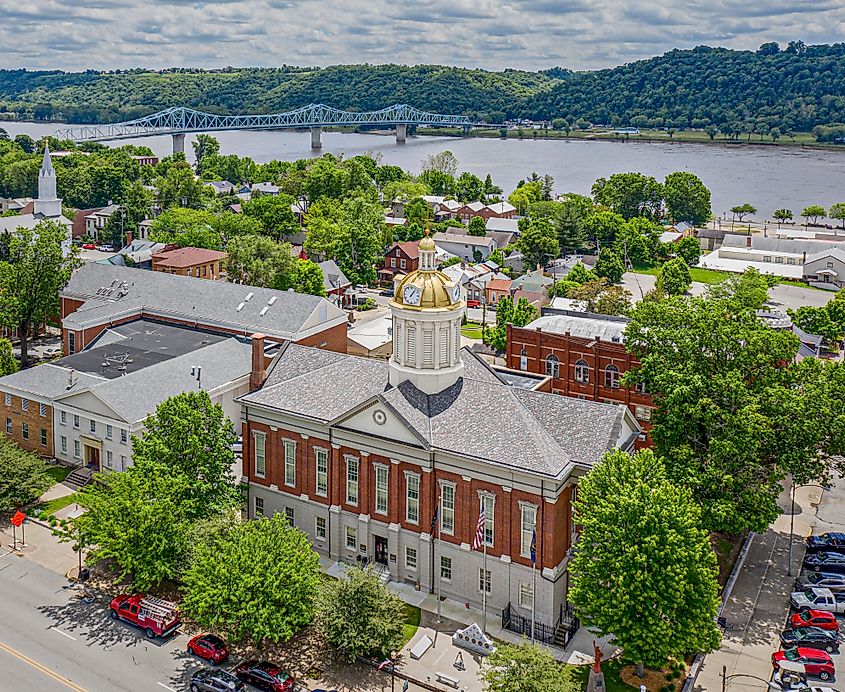
The cute town of Madison, with 12,200 inhabitants, sits on the banks of the Ohio River. The town lies in Indiana's southeast, midway between the cities of Cincinnati, Ohio, and Louisville, Kentucky. Named in honor of the founding father James Madison, Madison offers as many architectural examples as Angola and likewise hosts the Jefferson County Historical Museum. Much of Madison's downtown area is recognized as a National Historic Landmark District. The town maintains a busy schedule of cultural events, with festivals taking place year-round, like the Chautauqua Festival of Art and the Madison Regatta. For park lovers, Madison's best offering is Clifty Falls State Park, with Clifty Creek and numerous scenic waterfalls. For a place to stay, try the Clifty Inn, which overlooks the Ohio River.
Aurora
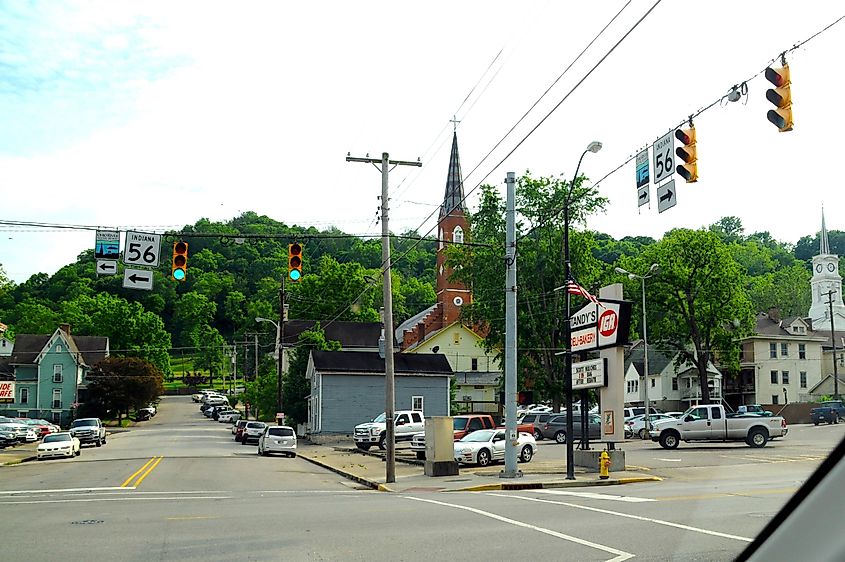
Aurora, its name reflecting the historic rivalry it shared with the nearby town of Rising Sun, developed, from its 1819 incorporation, into a thriving riverside town of 3,500 today. Seated on the banks of the Ohio River, which marks the border with nearby Kentucky and is ten miles west of Cincinnati, Aurora has operated as a trading hub for generations. Visitors today can find outdoor adventures in the town's numerous parks, like Gabbard Riverfront Park and Aurora City Park. The historic district was named to the National Register of Historic Places in 1996, not least for the Hillfort mansion, a reminder of the trading fortunes made on the Ohio River, which made Aurora. The town's protected status limits hotel development, but the Hillcrest Motel lies a few miles to Aurora's southwest.
Wabash

Sitting on the Wabash River, the northeastern, one-time river-trading town of Wabash, with a population of 10,300, has also earned its place in history. The town became the world's first electrically lighted city when the power first flipped on in 1880. In more modern times, Wabash hosts the Honeywell Center, a hub for arts and entertainment since its 1952 opening. The upscale Charley Creek Inn lies a short walk from Honeywell. Nature lovers can walk the town's Wabash River Trail. Wabash is home to several unique architectural examples, notably the Eagles Theatre, Wabash County Courthouse, and the Wabash County Historical Museum, which celebrates the town's commercial past.
Goshen

Goshen, a larger town with 34,400 residents, lies in north-central Indiana and serves as the seat of Elkhart County. The town is sometimes called by its nickname, "Maple City," for its many maple trees. Goshen is home to Goshen College and a collection of preserved historic buildings and areas. These include the Elkhart County Courthouse, a stately brick building that was first constructed from 1868 to 1870. The town also has the Elkhart County Fairgrounds, which holds the annual Elkhart Country 4-H Fair to celebrate the region's agricultural abilities. The Inn on South Fifth, a converted brick home, earns near-perfect guest reviews. Other chain hotels lie along Lincoln Highway southeast of downtown.
Angola
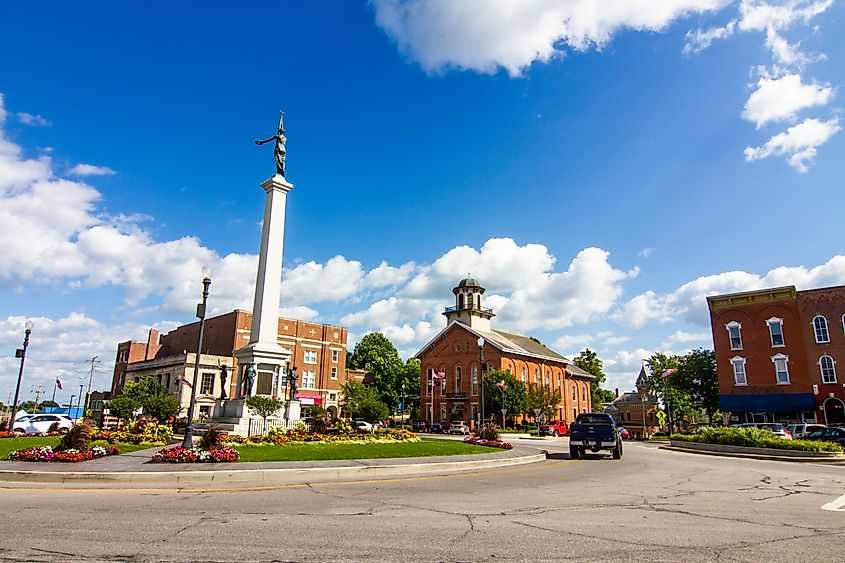
Angola, with a population of 9,400, has played host to settlers and visitors since its incorporation in 1838. Situated in Indiana's northeast corner, next to the Michigan and Ohio state lines, the town has a famous statue, erected in the middle of a downtown traffic circle, honoring local men who fought in the US Civil War. The town is likewise the home of Trine University, adding college-town charm to the area. Angola's Commercial Historic District boasts a diverse mix of historic architectural styles, from Classical Revival to Art Deco. Just north of Angola lies Pokagon State Park, a large green space along Lake James. A Wingate by Wyndham location sits a couple of miles west of downtown.
Greenfield

Greenfield, with 24,800 inhabitants, is a substantially larger town east of the Indianapolis capital area. By 1828, the town was already large enough to be named the seat of surrounding Hancock County. A fossil-fuels and rail boomtown in the mid- and late-1800s, Greenfield today gives tourists a choice between two historic districts: one in Courthouse Square and the other in a separate residential area. Architectural styles range from Romanesque Revival and Second Empire to residential buildings in the Queen Anne, Neoclassical, and Bungalow schools. The city's diverse parks include Brandywine Park, Thornwood Nature Preserve, and Hawk's Tail of Greenfield, a golf course. North of town, The Nest offers apartment-style accommodation. Other chain hotel brands dot the same neighborhood.
Small Towns Highlight Indiana's Best Features
Indiana's small towns should appeal to visitors of all ages and tastes. Map-dot destinations like New Harmony hold big claims to local history and culture, regardless of size. River settlements, with Aurora and Wabash as two of many possible examples, allowed Indiana to grow to the fully developed state it has long been. Larger towns, from Goshen to Greenfield, likewise give tourists good reasons to come for a first visit — or repeat visits into the future. With so much culture, history, and outdoor points of interest, Indiana's small towns will continue to attract interested visitors interested to some of its best features.











